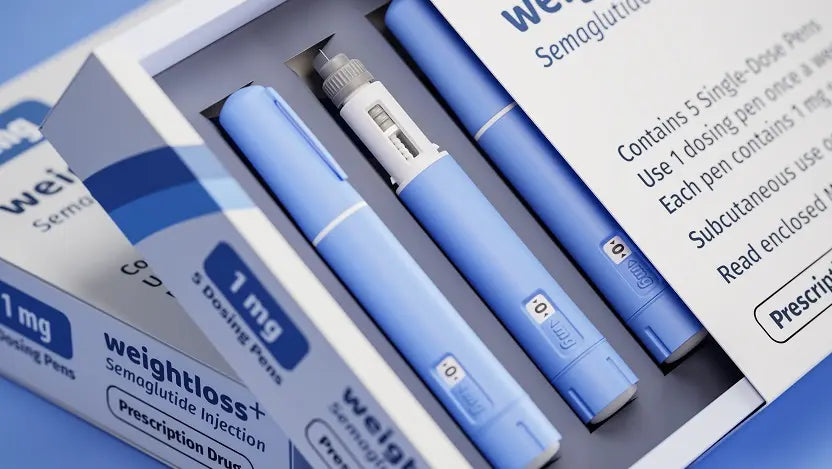
The Essential Nutrients for People on GLP-1 Weight Loss Medications
GLP-1 receptor agonists like semaglutide and tirzepatide have transformed the weight management landscape. They reduce appetite, improve blood sugar control, and support steady fat loss. But because these treatments work largely by suppressing hunger and reducing calorie intake, they can also make it harder for people to meet their daily nutrient needs.
Ensuring optimal nutrition is crucial—not only to protect overall health but also to maintain muscle mass, energy, and long-term weight stability. Below are the key nutrients everyone on GLP-1 therapies should prioritize.
1. Protein – The Foundation of Lean Mass
Because GLP-1s reduce appetite, many patients unintentionally eat less protein. This increases the risk of losing lean muscle mass during weight loss.
- Target: 1.2–1.6 g of protein per kilogram of body weight daily
- Best sources: Lean meats, poultry, fish, eggs, Greek yogurt, tofu, legumes, protein shakes
👉 If appetite is low, consider smaller, high-protein snacks or amino acid supplements.
2. Fiber – Gut Health & Satiety
While GLP-1s help regulate appetite, fiber supports digestive health, promotes satiety, and helps stabilize blood sugar. A low-fiber diet can worsen constipation, a common side effect of GLP-1 therapy.
- Target: 25–30 g per day
- Best sources: Vegetables, berries, beans, whole grains, chia and flax seeds
3. Omega-3 Fatty Acids – Inflammation & Heart Health
Omega-3s are essential for cardiovascular health, which is particularly important given the link between obesity and heart disease. They also support brain function and help reduce inflammation.
- Target: 250–500 mg of combined EPA/DHA per day
- Best sources: Fatty fish (salmon, mackerel, sardines), flaxseed, chia, walnuts, algae-based supplements
4. Vitamin D – Muscle, Bone & Immunity
Vitamin D deficiency is common, and reduced food intake can make it worse. Adequate vitamin D helps protect muscle and bone strength during weight loss.
- Target: 600–1000 IU daily (individual needs vary)
- Best sources: Sunlight, fortified dairy, fatty fish, supplements if required
5. Magnesium – Energy & Muscle Function
Magnesium supports hundreds of enzymatic reactions, including energy production and muscle function. Low intake can contribute to fatigue, cramps, and poor recovery.
- Target: 300–400 mg per day
- Best sources: Nuts, seeds, leafy greens, legumes, whole grains
6. B Vitamins – Energy & Metabolism
With reduced food intake, patients may struggle to meet requirements for B vitamins, which are crucial for energy metabolism, nerve function, and red blood cell formation.
- Best sources: Whole grains, lean meats, eggs, dairy, legumes, leafy greens
- Consideration: A high-quality multivitamin can help cover gaps
7. Calcium – Bone Strength
Maintaining calcium intake is vital for bone density, especially when appetite is suppressed and dairy or fortified alternatives are consumed less frequently.
- Target: 1000–1200 mg per day
- Best sources: Low-fat dairy, fortified plant milks, leafy greens, calcium-set tofu
8. Creatine – Preserving Strength
Although not an “essential nutrient” in the strict sense, creatine is one of the most researched supplements for muscle health. It can help preserve strength and muscle mass during calorie restriction.
- Target: 3–5 g daily
- Best source: Supplementation (powder or capsule)
The Bottom Line
GLP-1 medications are powerful tools for weight loss, but optimal results come from pairing them with targeted nutrition. By prioritizing protein, fiber, healthy fats, and key vitamins and minerals, patients can reduce side effects, protect muscle and bone health, and sustain long-term wellbeing.
A registered dietitian or nutrition specialist can help tailor a supplement and meal plan to ensure no nutrient gaps are left behind.
